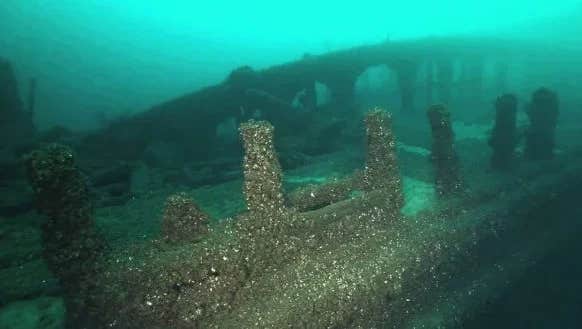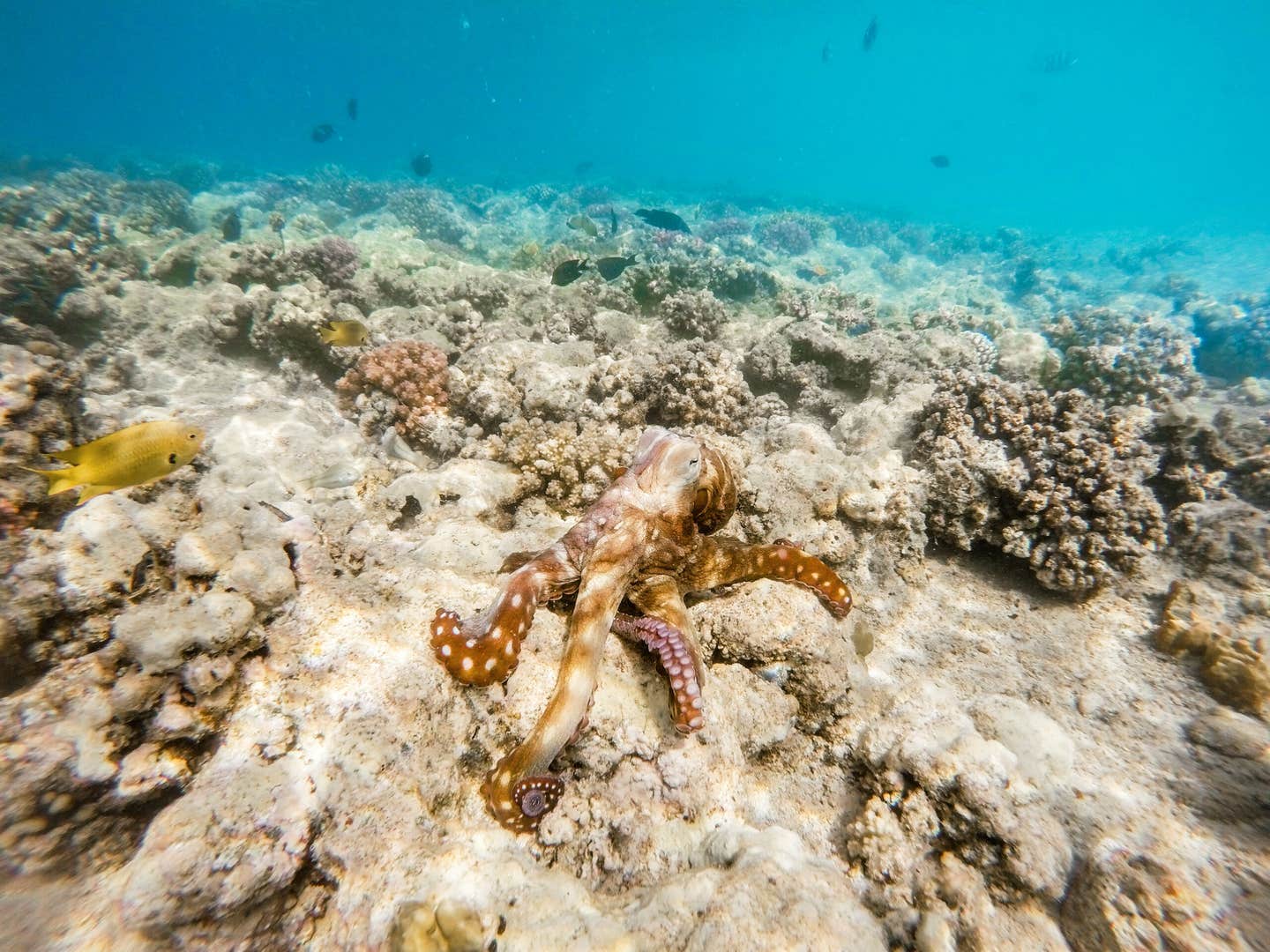9000-year-old ‘Stonehenge-like’ structure found hidden in Lake Michigan
Researchers found a mysterious arrangement of large stones resting on the lake bed. Dubbed “Michigan’s Stonehenge” by those who’ve seen it.

The clear, blue waters of Grand Traverse Bay have been a silent witness to centuries of maritime heritage and legend. (CREDIT: CC BY-SA 4.0)
Beneath the tranquil surface of Grand Traverse Bay lies a secret far older than any shipwreck. Long known for calm waters and a proud seafaring past, the bay is now drawing attention for a prehistoric twist hidden beneath its waves. Over the years, divers have uncovered the skeletons of sunken trade vessels, remnants of a vibrant shipping era. But this time, the spotlight has shifted to something far more ancient.
Dr. Mark Holley, an underwater archaeology professor at Northwestern Michigan University, made the find during a routine sonar scan. What he discovered stunned researchers—a mysterious arrangement of large stones resting on the lake bed. Dubbed "Michigan’s Stonehenge" by those who’ve seen it, the site is stirring fresh curiosity about the region's forgotten chapters.
About 40 feet below the surface, a winding line of stones spans over a mile. Though smaller than the famous British monument, the layout shows deliberate design. The stones range from basketball-sized to as big as compact cars, forming a serpentine trail that defies natural explanation.
Among these ancient rocks, one stands out. It measures about 3.5 feet tall and 5 feet across and features a carved mastodon. This detail links the site to a time when humans and prehistoric giants shared the same land. The image—etched in stone—offers a rare bridge between ancient life and early culture in North America.
Experts believe the stones were arranged roughly 9,000 years ago, shortly after the Ice Age ended. At that time, the waters of Grand Traverse Bay had not yet risen to cover the land. This would make the site 4,000 years older than England’s Stonehenge, placing it deep within the early Holocene period.
Mapping the Depths of Grand Traverse Bay
The bay itself stretches 32 miles long and 12 miles wide. Located along the northeastern coast of the lake, it’s a magnet for divers and history lovers. Many visit to explore the shipwrecks scattered across the bottom. But few know of the ancient relic that sleeps deeper still, hidden from curious eyes.
To protect the site, Dr. Holley took swift action. He informed the Grand Traverse Band of Ottawa and Chippewa, showing respect for their ancestral ties to the land. Today, the location of the stone trail remains confidential. Its exact coordinates are withheld to preserve its integrity and guard it against potential harm.
The submerged nature of the stones poses a significant challenge for archaeologists. Since their discovery in 2007, progress in studying the site has been slow, leading to widespread speculation about its significance. Researchers have looked to other regional stone formations for potential correlations, hoping to unravel the secrets of these underwater stones.
Similar stone structures in the vicinity provide tantalizing clues about the purpose of the Grand Traverse Bay arrangement. Dr. John O'Shea from the University of Michigan has studied a rock formation in Lake Huron, dating back 9,000 years.
Situated 120 feet below the surface along the Alpena-Amberley Ridge, this stone assemblage is believed to have been used for ancient hunting practices, possibly to channel caribou.
Beaver Island, the largest island in Lake Michigan, also holds ancient stone formations. On the island's west side, along the Reddings Trail, a circle of glacial boulders is found, some marked with inscriptions. One stone even features a carved hole, suggesting it had a functional use.
Although formal analyses like carbon dating are lacking, these stones are thought to have been significant to the Native American communities that once inhabited the island, possibly serving as calendrical markers or celestial observation points.
Unraveling the Mysteries
The purpose of the Grand Traverse Bay stone arrangement remains speculative. It could have been used by ancient caribou hunters, similar to the Lake Huron formation, or it might have served as an ancient calendar, aligning with celestial events like Stonehenge. The ambiguity highlights the need for further research and analysis, which is complicated by the underwater setting.
As technology advances, new methods of underwater exploration and analysis emerge, bringing us closer to understanding these ancient structures. Each discovery adds to our knowledge of the past, allowing us to glimpse the lives and practices of those who lived thousands of years ago.
In the coming years, the secrets of Grand Traverse Bay are likely to unfold further, providing invaluable insights into prehistoric life and the ancient peoples who once called this region home. Through meticulous research and respectful preservation, we honor their memory and enrich our understanding of the world’s ancient past.
Note: Materials provided above by The Brighter Side of News. Content may be edited for style and length.
Like these kind of feel good stories? Get The Brighter Side of News' newsletter.



